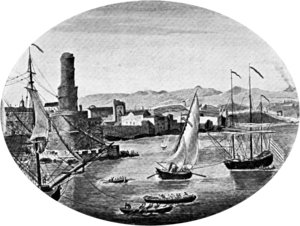Cross posted from The Stars Hollow Gazette
 The main purpose our blogging is to communicate our ideas, opinions, and stories both fact and fiction. The best part about the the blogs is information that we might not find in our local news, even if we read it online. Sharing that information is important, especially if it educates, sparks conversation and new ideas. We have all found places that are our favorites that we read everyday, not everyone’s are the same. The Internet is a vast place. Unlike “Punting the Pundits which focuses on opinion pieces mostly from the mainstream media and the larger news web sites, “Around the Blogosphere” will focus more on the medium to smaller blogs and articles written by some of the anonymous and not so anonymous writers and links to some of the smaller pieces that don’t make it to “Pundits” by Krugman, Baker, etc.
The main purpose our blogging is to communicate our ideas, opinions, and stories both fact and fiction. The best part about the the blogs is information that we might not find in our local news, even if we read it online. Sharing that information is important, especially if it educates, sparks conversation and new ideas. We have all found places that are our favorites that we read everyday, not everyone’s are the same. The Internet is a vast place. Unlike “Punting the Pundits which focuses on opinion pieces mostly from the mainstream media and the larger news web sites, “Around the Blogosphere” will focus more on the medium to smaller blogs and articles written by some of the anonymous and not so anonymous writers and links to some of the smaller pieces that don’t make it to “Pundits” by Krugman, Baker, etc.
We encourage you to share your finds with us. It is important that we all stay as well informed as we can.
Follow us on Twitter @StarsHollowGzt
This is an Open Thread.
It’s been a lively day on the tubes with most of the posting on the super secret leaked FISA Warrant by Glenn Greenwald and the national security crew at The Guardian. Nice work for your first week on the job, Spencer.
Our friends at Voices on the Square have some great posts on Bradley Manning and workers rights:
- Bradley Manning’s Legal Duty to Expose War Crimes by geomoo
- Hellraisers Journal: Meet Lisa Lopez of #WalmartStrikers, “I had to apply for food stamps.” by JayRaye
At Corrente, lambert gives “mad props” to Glenn and an opinion piece at Bloomberg by Noah Feldman.
Also from DCblogger:
and libbyliberal:
Over at Americablog, Our friend Gaius Publius tells us what’s is in the tar sands oil besides oil:
Gaius calls it “sludge,” I’d call it “toxic.”
At FDL News Desk, DSWright has this news:
- Wall Street Sees Trade Deals As Opportunity To Further Gut Dodd-Frank
- Obama Administration Officials Using Secret Email Accounts
Jon Walker at FDL Action tells about these developments:
- Center for American Progress Turns Against the Push for a Grand Bargain
- Disapproval of Affordable Care Act Hits a New High
- Even Opponents of Same-Sex Marriage Think It Is Inevitable
At FDL’s The Dissenter, Kevin Gosztola gives an the inevitable news:
Glenn, Spencer, here come the secret subpoenas for your phone and e-mails.
At Salon, lapsed blogger David Dayen tell you the truth about your student loan, it’s not really a loan. h/t Yves Smith at naked capitalism
Well, this is a really good question from digby at Hullabaloo:
Atrios wants to know what 20,000 NSA employees do all day.
The last words today go to Mike Masnick at Techdirt, just in case you weren’t disgusted or paranoid enough about the US government:
- Oh, And One More Thing: NSA Directly Accessing Information From Google, Facebook, Skype, Apple And More
This program, like the constant surveillance of phone records, began in 2007, though other programs predated it. They claim that they’re not collecting all data, but it’s not clear that makes a real difference:
The PRISM program is not a dragnet, exactly. From inside a company’s data stream the NSA is capable of pulling out anything it likes, but under current rules the agency does not try to collect it all.
Analysts who use the system from a Web portal at Fort Meade key in “selectors,” or search terms, that are designed to produce at least 51 percent confidence in a target’s “foreignness.” That is not a very stringent test. Training materials obtained by the Post instruct new analysts to submit accidentally collected U.S. content for a quarterly report, “but it’s nothing to worry about.”
Even when the system works just as advertised, with no American singled out for targeting, the NSA routinely collects a great deal of American content.
I now need a couple of vodka martinis and just leave the jar of olives on the bar.


 Port Royal provided a safe harbour initially for privateers and subsequently for pirates plying the shipping lanes to and from Spain and Panama. Buccaneers found Port Royal appealing for several reasons. Its proximity to trade routes allowed them easy access to prey, but the most important advantage was the port’s proximity to several of the only safe passages or straits giving access to the Spanish Main from the Atlantic. The harbour was large enough to accommodate their ships and provided a place to careen and repair these vessels. It was also ideally situated for launching raids on Spanish settlements. From Port Royal, Henry Morgan attacked Panama, Portobello, and Maracaibo. Roche Brasiliano, John Davis (buccaneer), and Edward Mansveldt (Mansfield) also came to Port Royal.
Port Royal provided a safe harbour initially for privateers and subsequently for pirates plying the shipping lanes to and from Spain and Panama. Buccaneers found Port Royal appealing for several reasons. Its proximity to trade routes allowed them easy access to prey, but the most important advantage was the port’s proximity to several of the only safe passages or straits giving access to the Spanish Main from the Atlantic. The harbour was large enough to accommodate their ships and provided a place to careen and repair these vessels. It was also ideally situated for launching raids on Spanish settlements. From Port Royal, Henry Morgan attacked Panama, Portobello, and Maracaibo. Roche Brasiliano, John Davis (buccaneer), and Edward Mansveldt (Mansfield) also came to Port Royal.






